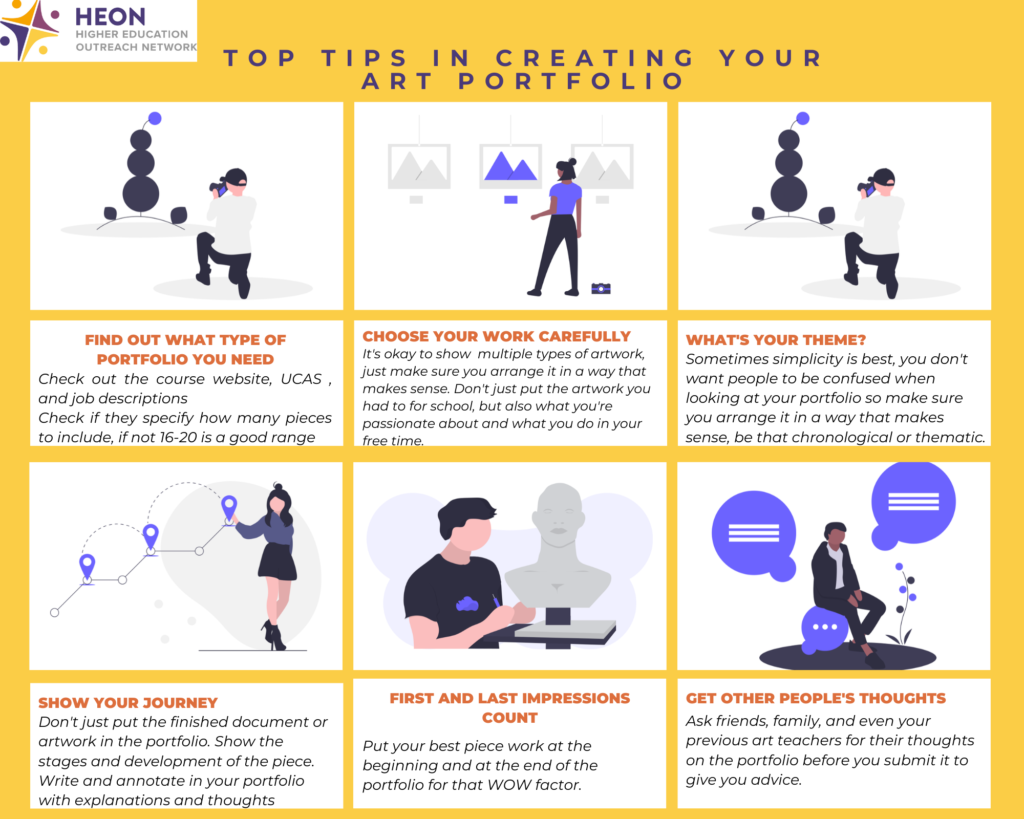How to... Create an Art Portfolio
Creating an art portfolio is, essentially, an art in itself. It requires time and patience, and the earlier you get started, the better off you’ll be when it comes to applying for courses and jobs.
but what is a portfolio?
A portfolio is defined as “a set of pieces of creative work intended to demonstrate a person’s ability to a potential employer” as well as to universities or colleges during their recruitment process. It is usually something which enhances or adds to your application and the deciding factor in getting a place on a course and eventually a job as a creative professional. A portfolio is subjective and it is entirely up to you to decide what to include. It should reflect your personality and leave the reader with a lasting impression about you and your creative aspirations.
how should I present my portfolio?
A traditional portfolio is usually presented in an A1 black portfolio which includes roughly 16 – 20 pieces of work. However, if your work is more digitally creative, such as animation or computer games art, then it’s okay for it to be saved in a digital format so you can include files such as animations and movies.
It’s a good idea to do research into what the course requirements are beforehand before you embark on preparing your portfolio. It’s an idea to create an instagram account where you keep all your portfolio work, or if you wish, start up your own website. Here’s an example of an artist’s instagram profile: @deburiart
what should i include?
As we mentioned earlier, a portfolio is subjective so it’s entirely up to you. it’s important that your work is ordered and well-presented. It could be in chronological order or by theme or project you have been working on at school. If you have started a sketchbook, then include pages from it. Don’t be afraid to include work that contains mistakes as this demonstrates your thought processes and your ability to experiment.
need more advice?
Check out the video from the University for the Creative Arts on creating your portfolio and our handy infographic.

Good luck with creating your portfolio!